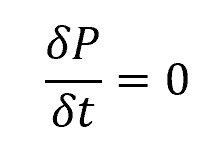In the study of fluid dynamics, you may come across two fundamental concepts: transient flow and steady state. Transient flow refers to the flow of fluid that changes with time, while steady state flow is the flow of fluid that remains constant over time.

In this article, we will explore each concept first, and then proceed to a detailed comparison between the two.
Understanding Steady State Flow
In steady state flow, fluid properties like velocity, pressure, and temperature remain constant over time. For any given point in the system, these properties do not change. Mathematically, this can be expressed as:


Elevate Your Engineering With Excel
Advance in Excel with engineering-focused training that equips you with the skills to streamline projects and accelerate your career.
Where:
- P = any fluid property such as pressure, temperature, velocity, etc.
- t = time [s]
This makes analyzing and predicting fluid behavior under steady state flow relatively simpler.
You can find steady state flow scenarios in systems like heating and cooling, where a constant temperature difference is maintained. It is also present in pipelines, where fluid is transported at a constant rate.
Although assuming steady state flow can simplify analysis, it may not accurately represent actual fluid flow in many situations. In reality, there is no system that is truly steady state all the time.
Understanding Transient Flow
Transient flow, commonly called unsteady flow, refers to fluid flow that changes with time. When a fluid system is in transient flow, one or more of its parameters, such as velocity, pressure, and temperature, change over time. This is different from steady-state flow, where these parameters remain constant throughout the duration of the flow.

You can find transient flow in various engineering applications. For instance, transient flow is seen in water distribution systems when valves open or close, and in pipelines during startup, shutdown, or surge events. It is also observed in natural systems, such as rivers during seasonal changes and floods.
Analyzing transient flow can be challenging because it requires understanding of the time-varying behavior of the flow, which often involves solving complex equations. To tackle this problem, engineers often use computational methods like Computational Fluid Dynamics (CFD) simulations or simplified models. By understanding and accurately predicting transient flow behavior, you can optimize system performance and minimize issues like pressure surges, structural vibrations, and more.
Comparing Transient Flow vs Steady State Flow
Understanding the differences between transient flow and steady state flow is crucial for designing and analyzing fluid systems.
Time Dependence
In transient flow, you observe changes in fluid properties over time, making it time-dependent. In contrast, steady-state flow assumes that all fluid properties remain constant over time. This means that in steady-state flow analysis, you can focus on a single snapshot of the system without considering time-dependent factors.
The graphs below illustrate the difference in behavior between a steady and an unsteady flow with respect to time. The flow parameter in the y axis can be any fluid property being analyzed, such as fluid velocity, flow rate, pressure, or temperature.

It is important to note that classifying a particular flow, whether steady or unsteady, can depend on the chosen frame of reference. For instance, if you’re looking at water flowing in a river from a stationary bridge, it may appear steady because the properties at a particular location on the surface of the river seem constant. However, if you were to ride a boat downstream and track a specific water particle, you would see that its properties change as it moves with the flow, making it unsteady in that frame of reference.
Efficiency
When analyzing efficiency, transient flow allows you to examine the system’s performance during start-up, shutdown, and varying conditions. On the other hand, steady-state flow calculations are less computationally intensive, enabling you to optimize the flow more economically. However, steady-state analysis overlooks the temporary inefficiencies that might arise during operational changes.
Flexibility
Transient flow analysis provides a broader range of applications, as it can capture both the static and dynamic behavior of fluid flow systems. This allows you to make informed decisions regarding the design, operation, and maintenance of the system under various conditions. Steady-state flow analysis, while useful for designing systems that operate primarily under constant conditions, lacks the adaptability to account for changes in variables like flow rate, pressure, or velocity.
Complexity
Transient flow requires a more complex analysis due to its time-dependent nature, incorporating additional mathematics, computational methods, and potentially experimental data. This often results in longer simulation times and increased computational demand.
In contrast, steady-state flow need not consider time. Hence, its governing equations have one less dimension to consider than the governing equations of a similar transient flow. This simplifies the analysis, reduces computational demands, and eases interpretation of the results.
